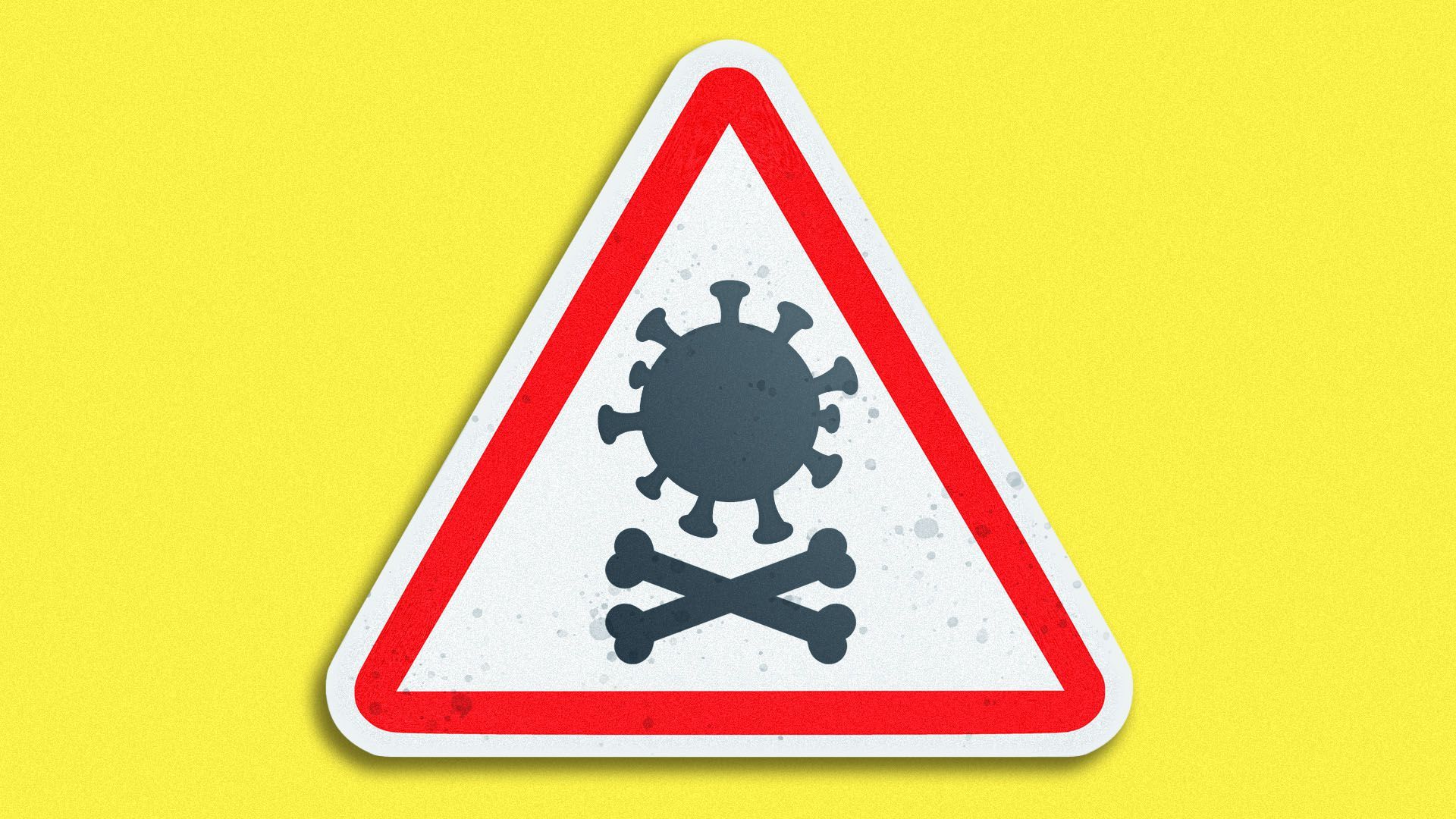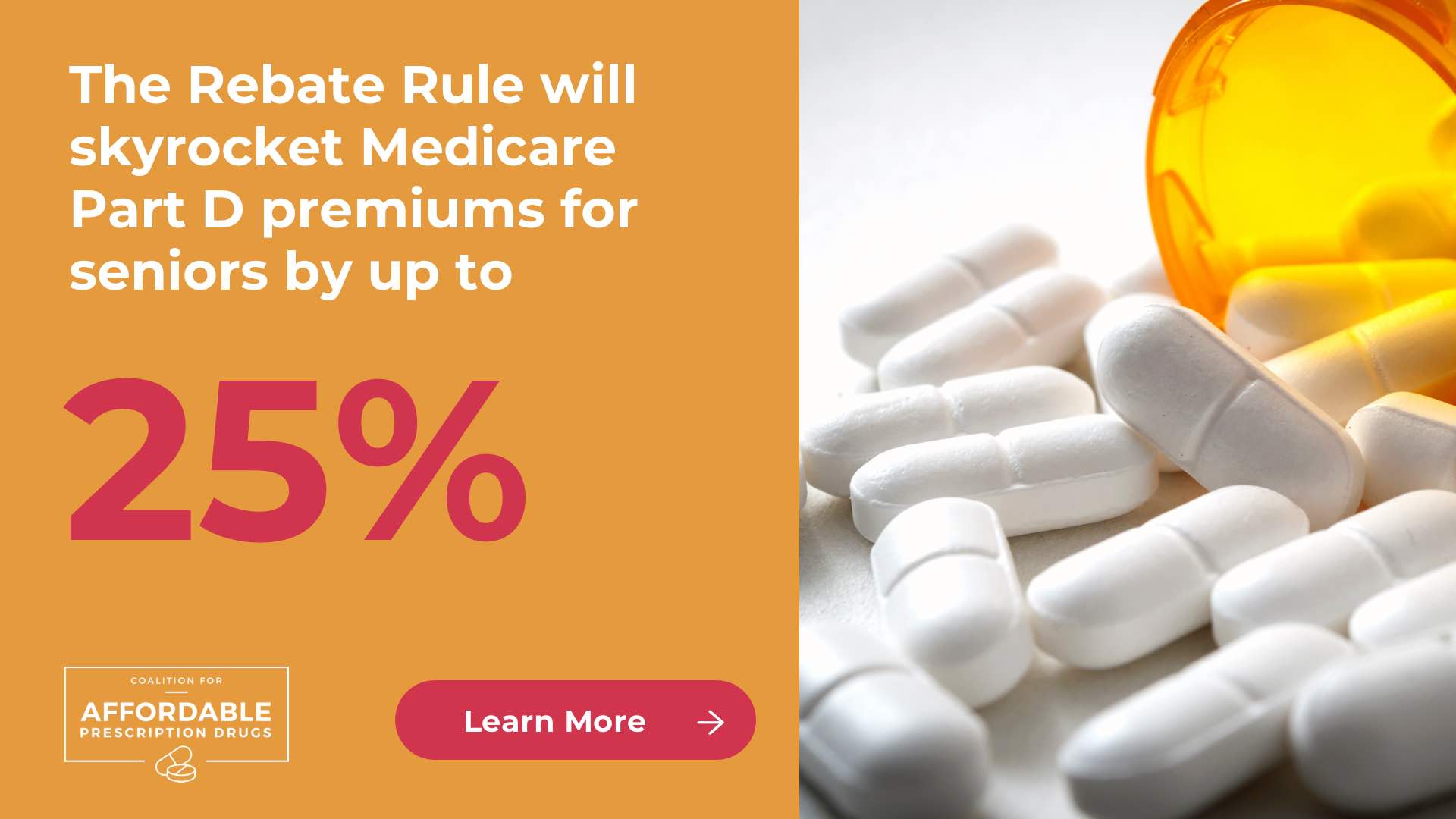| | | | | | | Presented By Coalition for Affordable Prescription Drugs | | | | Vitals | | By Caitlin Owens ·Jan 28, 2021 | | Good morning. Today's word count is 778, or a 3-minute read. | | | | | | 1 big thing: Coronavirus cases fall in 41 states |  Data: The COVID Tracking Project, state health departments; Map: Andrew Witherspoon/Axios New coronavirus infections fell by 16% over the past week — the third straight week of significant improvement, Axios' Sam Baker and Andrew Witherspoon report. Yes, but: The U.S. still averages roughly 165,000 new cases per day, meaning the virus is still spreading largely unchecked. And the rise of more contagious variants will ensure that Americans' risk remains high. Details: In 41 states, the average number of new daily cases was lower over the past week than the week before. No states got worse. - Nationwide, new cases are now at about the same level they were at in mid-December — down from their peak, but still a lot.
What's next: If Americans can accelerate this progress, we'll reduce the number of people who die before vaccines become universally available. - But that will be a challenge, given the country's track record and the continued spread of more easily transmissible variants.
|     | | | | | | 2. Coronavirus variants demand a tougher response |  | | | Illustration: Sarah Grillo/Axios | | | | New, more contagious coronavirus variants threaten the U.S. response to COVID-19 just as the best tools to fight it are becoming available, Axios' Bryan Walsh reports. Why it matters: As our response to COVID-19 evolves and improves with the introduction of vaccines, so does SARS-CoV-2 itself, with new variants emerging. The next few months will demand harsher measures to control the pandemic at the very moment when exhaustion is peaking. Details: The emergence of the new variants has driven governments to reimpose some border controls in an effort to stop their introduction, while scientists are pushing for more restrictions and hardier protective equipment. Be smart: We can simultaneously be doing almost enough to control the spread of the original coronavirus strain and not enough to control more dangerous variants. - "There are essentially two separate COVID-19 epidemics," the National Institute for Public Health and the Environment in the Netherlands reported last week. "One epidemic involving the 'old' variant, in which infections are decreasing, and another epidemic involving the (new) variant, in which infections are increasing."
The bottom line: Think of this next and most dangerous stage of the pandemic as a three-sided race: more contagious variants against the pace of vaccinations against our own willingness to endure more social distancing. Go deeper. |     | | | | | | 3. Who benefits from reopening ACA enrollment | | Nearly 15 million Americans who are currently uninsured are eligible for coverage on the Affordable Care Act marketplaces, and more than half of them would qualify for subsidies, according to a new Kaiser Family Foundation brief. Why it matters: President Biden is expected to announce today that he'll be reopening the marketplaces for a special enrollment period, but getting a significant number of people to sign up for coverage will likely require targeted outreach. Details: Of the 15 million people eligible for ACA coverage, 4 million are eligible for a free high-deductible plan, 4.9 million would qualify for a subsidized plan and 6 million wouldn't qualify for any subsidy. Between the lines: The uninsured who are eligible for ACA coverage with subsidies are disproportionately young adults, Hispanic, and working in the arts, entertainment, recreation, or construction industries. - They're also more likely to have a high school diploma or less.
|     | | | | | | A message from Coalition for Affordable Prescription Drugs | | Premiums for seniors will skyrocket under the Rebate Rule | | |  | | | | The Coalition for Affordable Prescription Drugs, alongside other concerned organizations, urges the Biden Administration and Congress to protect seniors from higher premiums by overturning this rule and enacting reforms that lower Rx prices. Learn more. | | | | | | 4. U.S. drug prices higher than other countries' | | Prescription drug prices in the U.S. are more than 256% higher than other 32 other countries, with the gap driven by brand-name drugs, a new report by nonpartisan RAND Corporation shows. The big picture: Drug spending in the U.S. jumped by 76% between 2000 and 2017, and the costs are expected to only increase over the next decade, per the report. - Total drug spending of the countries studied was $795 billion. The U.S. accounted for 58% of sales, but just 24% of the volume, Axios' Marisa Fernandez writes.
- Prescription drug spending in the U.S. accounts for more than 10% of all health care spending, according to the report.
By the numbers: Prices for brand name drugs in the U.S. averaged 3.44 times higher than the prices in other nations, when 2018 drug sales were analyzed. Some of the highest brands treat life-threatening illnesses, hepatitis C or cancers. - Generic drug prices in the U.S., on the other hand, were lower — only 84% of the average paid in other nations.
Noteworthy: Much of the current research on international drug price comparisons are more than 10 years old, the report says, noting its index can help give a better overview of health care spending. Go deeper: How other countries set their drug prices |     | | | | | | 5. Catch up quick |  | | | Illustration: Aïda Amer/Axios | | | | The White House coronavirus response team on Wednesday said that drug makers that aren't currently manufacturing coronavirus vaccines may be required to do so under the Defense Production Act, Reuters reports. The U.S. Office of Special Counsel alerted the White House and Congress on Wednesday of an investigation that found the Department of Health and Human Services misused millions of dollars that were budgeted for vaccine research and public health emergencies for Ebola, Zika and now the COVID-19 pandemic. A bipartisan commission is recommending an "Apollo Program" to enhance U.S. biodefense — including against engineered viruses, Bryan writes. The World Health Organization has warned that most pregnant women shouldn't use the Pfizer or Moderna vaccines, per WSJ. |     | | | | | | A message from Coalition for Affordable Prescription Drugs | | The Rebate Rule is the wrong prescription for lower drug prices | | |  | | | | The Trump Administration's prescription drug "Rebate Rule" will raise seniors' premiums by up to 25%, skyrocket government spending, and will not deliver the lower drug costs that patients need. Learn more about why it should be overturned. | | | | | | Axios thanks our partners for supporting our newsletters.
Sponsorship has no influence on editorial content. Axios, 3100 Clarendon Blvd, Suite 1300, Arlington VA 22201 | | | You received this email because you signed up for newsletters from Axios.
Change your preferences or unsubscribe here. | | | Was this email forwarded to you?
Sign up now to get Axios in your inbox. | | | | Follow Axios on social media:    | | | | | |
No comments:
Post a Comment